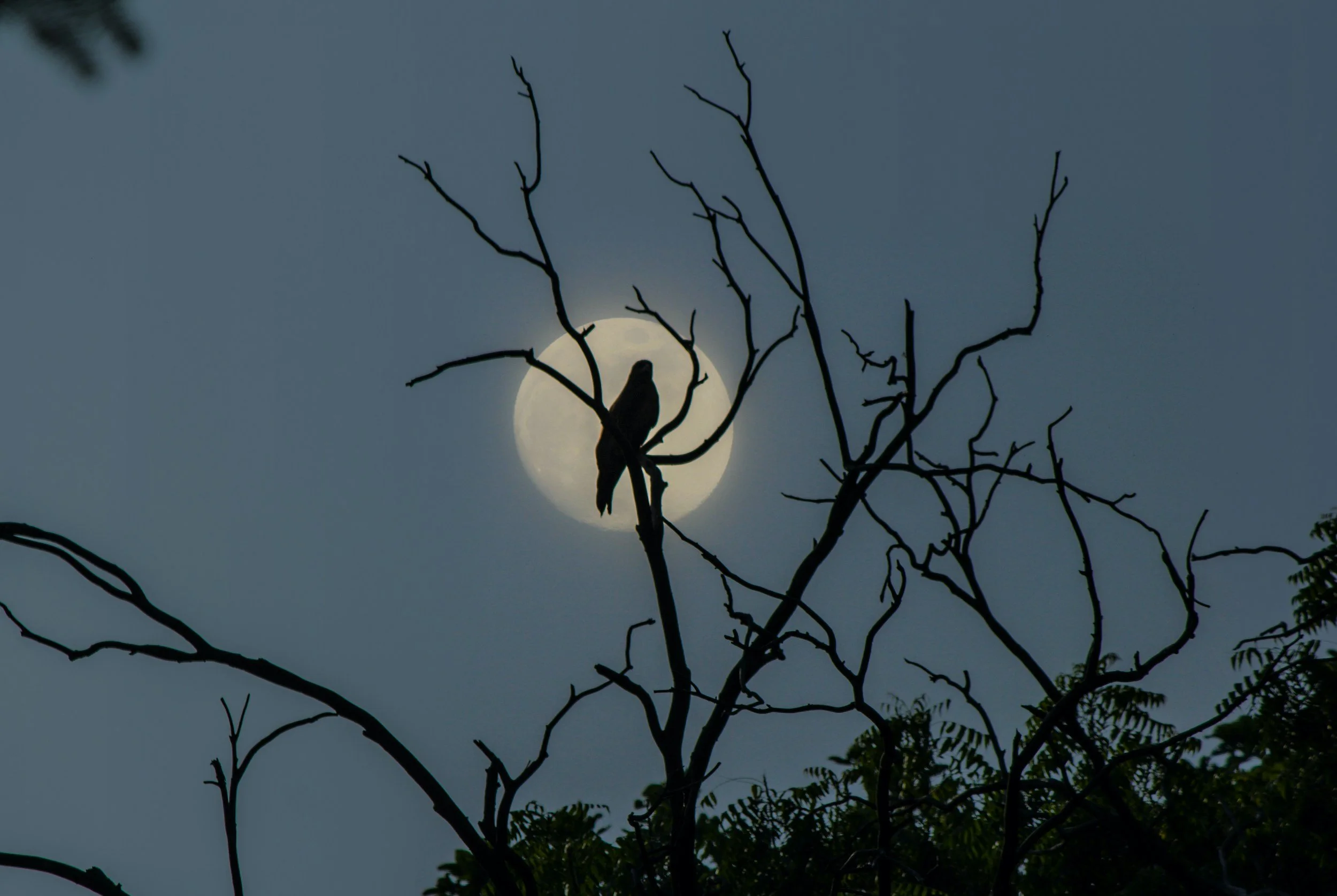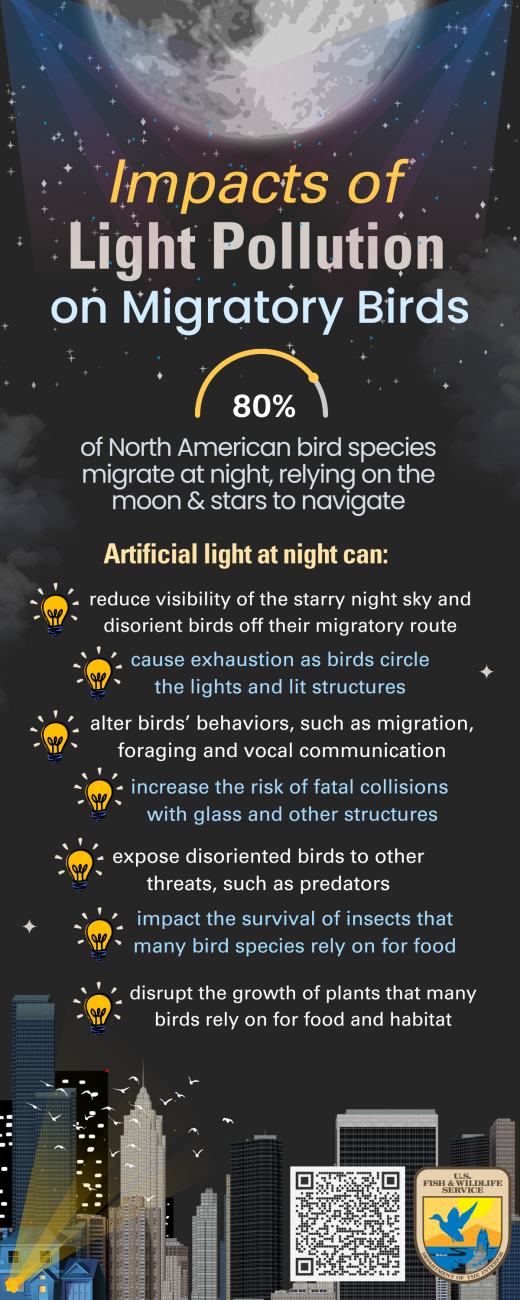Preserving the Night Sky
Reducing Light Pollution for Wildlife, Communities, and Future Generations
International Dark Sky Week begins April 21 through April 28, 2025. Founded in 2003 by high school student Jennifer Barlow, the event raises awareness about the harmful effects of light pollution and the importance of preserving the natural night sky. By encouraging individuals, communities, and policymakers to take action, International Dark Sky Week highlights the critical role darkness plays in maintaining healthy ecosystems and preserving the health and welfare of birds and wildlife.
Impacts of Light Pollution on Migratory Birds
Approximately 80% of North American bird species migrate at night, using the moon and stars for navigation. Artificial light at night (ALAN) disrupts these natural cues, leading to:
• Disorientation: Bright lights can draw birds off their migratory paths, causing them to circle illuminated areas and deplete vital energy reserves.
• Increased Collisions: Disoriented birds are more likely to collide with buildings and other structures, leading to significant mortality.
• Behavioral Changes: ALAN can alter migration timing, foraging habits, and vocal communication, impacting reproductive success.
• Ecosystem Disruption: Light pollution affects insect populations, reducing food availability for birds, and can interfere with plant growth, further impacting bird habitats.
Infographic Courtesy of U.S. Fish & Wildlife Service
The Growing Challenge of Light Pollution
Over the past several decades, light pollution has escalated dramatically:
• Global Increase: Light pollution has been increasing at a rate of approximately 9.6% per year from 2011 to 2022.
• Impact on Star Visibility: Children born today in a city where 250 stars can be seen at night will only be able to see 100 by the time they turn 18.
These trends highlight the urgency of addressing light pollution to preserve our night skies and the ecosystems that depend on them.
Actions Individuals Can Take to Reduce Light Pollution
Homeowners can contribute to darker skies by:
• Using Shielded Fixtures: Install outdoor lighting that directs light downward to minimize skyglow.
• Choosing Warm-Colored Bulbs: Opt for bulbs with a color temperature of 3000K or lower to reduce blue light emissions.
• Implementing Timers and Motion Sensors: Ensure lights are only on when necessary, reducing unnecessary illumination.
• Closing Blinds at Night: Prevent indoor light from spilling outside, which can attract and disorient wildlife.
Municipal Strategies to Combat Light Pollution
Cities can play a pivotal role by:
• Adopting Lighting Ordinances: Enforce regulations that limit excessive lighting and encourage the use of dark-sky-friendly fixtures.
• Retrofitting Public Lighting: Replace outdated streetlights with fixtures that have proper shielding and appropriate brightness levels.
• Designating Dark Sky Areas: Establish parks or zones with minimal artificial lighting to serve as refuges for wildlife and stargazing spots for residents.
Case Studies: Cities Leading the Way
Several communities have successfully integrated dark sky principles:
• Flagstaff, Arizona: Recognized as the world’s first International Dark Sky City, Flagstaff has implemented stringent lighting codes to protect its night skies.
• Groveland, Florida: The city has initiated dark sky programs in new developments, promoting responsible lighting and community education.
• Homer Glen, Illinois: This suburb has adopted comprehensive lighting ordinances to reduce light pollution and enhance nighttime visibility.
Balancing Safety and Darkness
Contrary to common belief, reducing light pollution does not compromise safety. Properly designed lighting improves visibility by reducing glare and shadows. Studies have shown that well-lit environments with controlled lighting can deter crime more effectively than over-illuminated areas.
Interactive Tools to Monitor Light Pollution
• Light Pollution Map: An interactive world map that displays artificial night sky brightness at zenith, allowing users to monitor light pollution levels globally. lightpollutionmap.info
• Globe at Night: A citizen-science campaign that invites individuals to measure and submit their night sky brightness observations, contributing to a global database. globeatnight.org
Resources for Further Information
• DarkSky International: darksky.org
• National Wildlife Federation: nwf.org
• U.S. Fish & Wildlife Service: fws.gov
• CitiesWithNature Guide: citieswithnature.org
By taking collective action, we can ensure that the night sky remains a source of wonder and a vital component of our ecosystem. Let’s work together to keep birds safe during migration.



